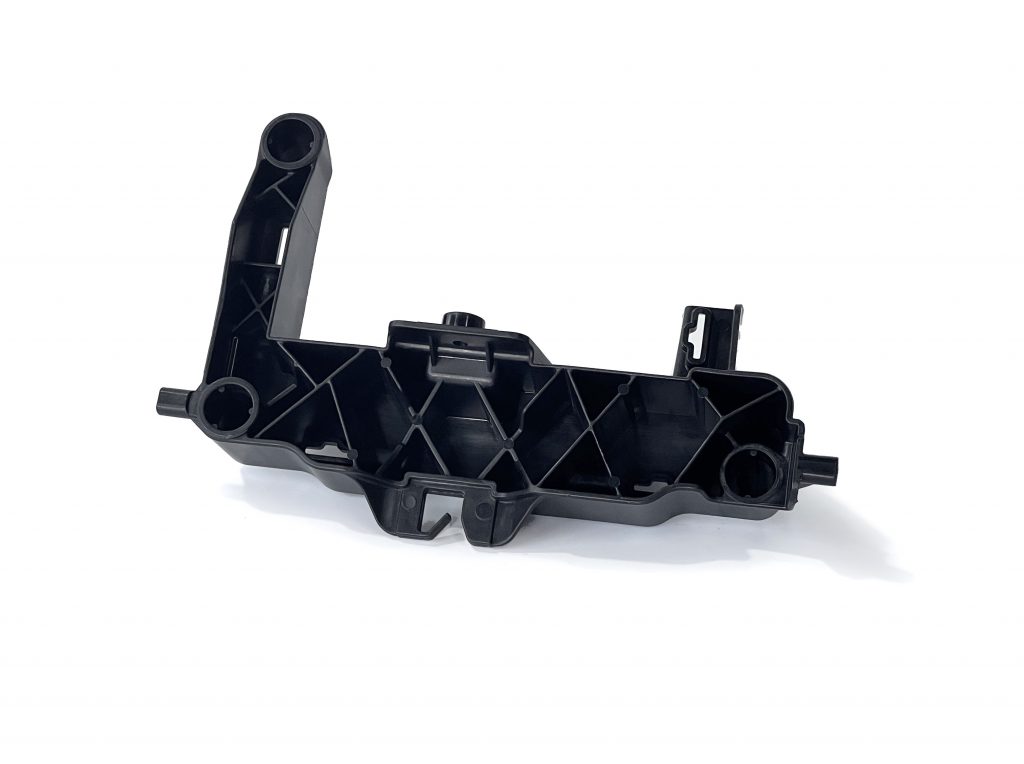CNC machining has traditionally been considered a machining method. However, modern industry has ever-increasing precision requirements for parts in all possible materials. This is why CNC plastic processing technology was developed. Now, it occupies a considerable position in high-precision, small-batch production and prototype manufacturing of plastic parts.
Whether you need any plastic prototyping or custom parts, fused complex assemblies, or finishing and polishing services for low-volume production, Proto MFG offers advanced CNC prototyping services as well as high-temperature and high-strength plastic processing materials.

Reasons why plastic parts are popular
Why is plastic so popular? Since the invention of industrial-grade polymers, the intrusion of plastics into all branches of modern industry has been unstoppable. There are many reasons for this. I’ll just name three main reasons. Plastic parts are cheap, lightweight and durable. Let’s talk about the first point here. Cheap means they cost much less to make than metal parts.
CNC plastic processing methods
There are many ways to produce high-precision plastic parts. Modern industrial grade plastics are cast, injection molded, printed or machined. The first three options are ideal for manufacturing parts with complex geometries that have an excellent surface finish. But when you need to achieve tight tolerances or produce a mirror-like surface finish on almost any type of part, nothing beats machining. About 80% of the plastic parts are CNC milled. This is the most widely used method for manufacturing parts without an axis of rotation. All the rest are usually opened on a lathe. To achieve an excellent surface finish, CNC machined parts are polished or chemically treated.
Plastic processing tips
Equipment
First, let’s clarify something. There are no plastic CNC machines. Virtually all machine tools used to cut plastic are metalworking tools. Their precise stiffness and power output allow them to process even hardened plastics with ease. I would point out that woodworking machines are less rigid and therefore not as effective
machining tools
Choosing the best cutting tool for plastic parts is a complex undertaking. The reason for this is that the composition of plastics and composite materials varies greatly. Some plastics are reinforced with hard carbide particles or have some additives that enhance flexibility, heat resistance or other parameters. All of this changes the way plastics respond to machinery. Even the colorant of the material is important because, depending on its type, the hue may change during processing due to extensive heating.
Having said that, it is obvious that the correct cutting tool geometry must be selected for the plastic parts being machined. For example, a milling cutter is similar to an aluminum milling cutter with two flutes, however, the sharp edge has a sharper angle. Their protagonist (120 degrees for metals) becomes only 60 degrees. This way, the chips are smaller and can be removed more easily. However, you cannot use this drill bit on metal. It will break within minutes.
Parts clamping
This is important to remember when clamping plastic blocks. Plastic is not metal. If the blank is clamped with too much force, it is easy to leave large marks on the surface. In fact, if you apply too much force, the part may break. If you want to avoid 100% leaving marks, it is recommended to use special spacers made of softer material between the fixture and the part. Another issue is the rigidity of the part. For example, if you are drilling a fairly large part (think laptop case). You need to pay close attention to the distance between the drill hole and the fixture. During this process, the drill bit will try to pull the part up along its groove, and will succeed if the fixture is too far away. It can bend parts or may actually rip parts from the fixture.
Cutting parameters
Let’s take CNC milling of plastic casings as an example to look at the choice of plastic cutting processes. The main issues you have to watch out for are excessive friction and plastic deformation of the part, not cutting. To avoid the second problem, always keep your cutter sharp and if the material you are using is not strong enough, freeze it. Plastic becomes hard and brittle at low temperatures.
To prevent chips from melting onto the CNC machined part, you need to keep the tool moving and prevent it from staying in one position for too long, removing the chip as quickly as possible. When the feed speed is high, the spindle speed must also be fast. A rough estimate is about 3 times the aluminum feed rate, with a corresponding cutting speed.
The role of plastic in CNC prototype production
Plastic processing services are closely related to CNC prototype production technology. Polymer materials are ideal for prototyping and engineering verification. The reason is that plastic is actually very easy to work with. If you don’t have any heating or forming equipment, making parts from CNC plastic blocks is a great way to get these prototypes quickly and easily. You can use the same widely available equipment that you use to work with metal, so you have great flexibility. Cutting speeds and feed speeds will be faster, resulting in shorter lead times and the opportunity to test samples of your products faster and get them to market earlier than your competitors.
PROTO MFG provides a wide range of manufacturing capabilities and other value-added services for all of your prototyping and production needs. Visit our website to learn more or to request a free, no-obligation quote.